The purpose of this feature is to give scout leaders, educators and naturalists an idea of some of the natural events coming up each month. We will try to cover a variety of natural events ranging from sky events to calling periods of amphibians, bird and mammal watching tips, prominent wildflowers and anything else that comes to mind. We will also note prominent constellations appearing over the eastern horizon at mid-evening each month for our area for those who would like to learn the constellations. If you have suggestions for other types of natural information you would like to see added to this calendar, let us know! Note: You can click on the hyperlinks to learn more about some of the featured items. To return to the Calendar, hit the "back" button on your browser, NOT the "back" button on the web page. All charts are available in a "printer friendly" mode, with black stars on a white background. Left clicking on each chart will take you to a printable black and white image. Please note that images on these pages are meant to be displayed at 100%. If your browser zooms into a higher magnification than that, the images may lose quality. Though we link book references to nationwide sources, we encourage you to support your local book store whenever possible.
Notes and Images From January 2019
It had been over a decade since I had the opportunity to see and photograph a total lunar eclipse. When January 20th dawned clear and cold, I realized that I might finally get another chance. I finished setting up around sundown, and took a break till the beginning of the eclipse. I used my Televue 85mm refractor, along with a 2X barlow lens and a field flattener. My total effective focal length was 1610mm. Using some homemade parts (one of which was part of a wooden stake) I attached the telescope and camera to an old mounting. Last of all, I cobbled together a system to warm the lens hood of the refractor, so the objective lens wouldn't fog up in the cold temperatures. Before the eclipse began I took a few shots of the full moon for reference and checked my focus and exposure settings. Eclipses are challenging, because the light is constantly changing. My camera was set on manual. I monitoring the exposures and adjusted the shutter speed as required. The shutter speeds I used ranged from 1/800 sec to 4 seconds. I watched as the moon started slipping into the earth's shadow. Almost immediately clouds started rolling in. I had to shoot images in the gaps between the clouds. It was already about 22 degrees F when I began. That, along with a light wind, made it feel a little bitter. I had a bunch of layers on, so I never was really chilled. It was a quiet night. During the entire time I was outside I heard only the occasional snort of a deer. At times the sky cleared. The winter constellations were beautiful. Orion, Canis Major, Taurus, Gemini, Auriga, and Ursa Major all shone brilliantly. Totality began at 11:41pm. It's amazing how much darker the skies become during totality. The Beehive Cluster in Cancer, only about 7 degrees away from the moon, was easy to see with the naked eye. I could pick out the Andromeda Galaxy low in the west. The view of the eclipse through binoculars was stunning. Unlike the total solar eclipse last August, there was plenty of time to relax and savor the ghostly, copper-colored moon. Lit by the combined light of all the sunsets on earth, it made me forget about the cold. Then it was over. A bright rim appeared as the moon slowly exited the earth's shadow. I took more images of the partal phases, then called it a night. When I covered the telescope and came back inside, it was 17 degrees F.
Sky Events for February 2019: Morning Sky:
Saturn will rise after the Moon, Venus and Jupiter on the first, about 40 minutes before sunrise. This should be a pretty gathering in the dawn sky. Evening Sky: Mars moves from Pisces into Aries around the middle of the month. It's quite small in a telescope field of view, and on the 15th it's less than 6 seconds of an arc in apparent diameter. Mercury moves into the evening sky this month. It will become visible low in the western sky at dusk around February 12th. It will gradually climb higher in the sky each day until it reaches greatest elongation from the Sun on February 26th. At that time is will be about 9 degrees above the western horizon. It always helps to pick a spot that has a flat horizon when trying to spot Mercury. It's fun though, because you can see it's change in position from day to day. Times given are in EDT for Chattanooga. Those in other time zones will need to adjust the given times accordingly.
Constellations: The views below show the sky looking east at 10:30pm EST on February 15th. The first view shows the sky with the constellations outlined and names depicted. Star and planet names are in green. Constellation names are in blue. The second view shows the same scene without labels.Ursa Major, the Great Bear, is now prominent in the northeast. All of the bright stars of Leo, the Lion, are visible now, including Denebola, the bright star at the tip of the Lion's tail. Part of the constellation of Virgo is visible below Leo. It's handy to know where Denebola is, because below it, if you imagine sliding down the Lion's tail, is the great Virgo cluster of galaxies. Left of Denebola, on a line towards the handle end of the "big dipper," you will see the faint star cluster Mellotte 111, in Coma Berenices. With a telescope, you can star hop or use a go-to mounting to find the barred spiral galaxy M91. The faint constellation of Crater has now cleared the horizon.On Learning the Constellations: We advise learning a few constellations each month, and then following them through the seasons. Once you associate a particular constellation coming over the eastern horizon at a certain time of year, you may start thinking about it like an old friend, looking forward to its arrival each season. The stars in the evening scene above, for instance, will always be in the same place relative to the horizon at the same time and date each February. In particular, learn the brightest stars (like Regulus and Denebola in the above scene), for they will guide you to the fainter stars. Once you can locate the more prominent constellations, you can "branch out" to other constellations around them. It may take you a little while to get a sense of scale, to translate what you see on the computer screen or what you see on the page of a book to what you see in the sky. Look for patterns, like the stars of Leo. The earth's rotation causes the constellations to appear to move across the sky just as the Sun and the Moon appear to do. If you go outside earlier than the time shown on the charts, the constellations will be lower to the eastern horizon. If you observe later, they will have climbed higher. As each season progresses, the earth's motion around the sun causes the constellations to appear a little farther towards the west each night for any given time of night. If you want to see where the constellations in the above figures will be on March 15th at 10:30pm EST, you can stay up till 12:30am EST on the February 16th and get a preview. The westward motion of the constellations is equivalent to two hours per month. Recommended: Sky & Telescope's Pocket Star Atlas is beautiful, compact star atlas. A good book to learn the constellations is Patterns in the Sky, by Hewitt-White. You may also want to check out at H. A. Rey's classic, The Stars, A New Way to See Them. For sky watching tips, an inexpensive good guide is Secrets of Stargazing, by Becky Ramotowski.
A good general reference book on astronomy is the Peterson
Field Guide,
A Field Guide to the Stars and Planets, by Pasachoff. The book retails for around $14.00.
The Virtual Moon Atlas is a terrific way to learn the surface features of the Moon. And it's free software. You can download the Virtual Moon Atlas here. Apps: We really love the Sky Safari 6 Pro. It is available for both iOS and Android operating systems. There are three versions. The Pro is simply the best astronomy app we've ever seen. The description of the Pro version reads, "includes over 100 million stars, 3 million galaxies down to 18th magnitude, and 750,000 solar system objects; including every comet and asteroid ever discovered." A nother great app is the Photographer's Ephemeris. Great for finding sunrise, moonrise, sunset and moonset times and the precise place on the horizon that the event will occur. Invaluable not only for planning photographs, but also nice to plan an outing to watch the full moon rise. Available for both androids and iOS.
Amphibians:
Recommended: The Frogs and Toads of North America, Lang Elliott, Houghton Mifflin Co.
Birds:
Red-Shouldered Hawks (upper image at right) mate as early as February in Tennessee. Watch for courtship activities of these and other hawks. Stick Nests: With the leaves down, this is a great time of year to find raptor stick nests. I make notes of all the nests I find and then periodically check them to see if anyone has "moved in." Many times Great Horned Owls make use of an old Red-Tailed Hawk's (lower image at right) nest from the previous year. The owls can already be incubating eggs in January. Of the hawks, Arthur Cleveland Bent, in his "Life Histories of North American Birds of Prey," writes,
Bent was writing about the Red-Tail Hawks in New England, so our times could be a little earlier. You probably have already put out your bird feeders, but if you havenít you're missing out on a lot of good looks at winter feeder birds. This is a great time of year to start learning your birds. Watch and listen for winter residents such as White-throated and White-crowned Sparrows, Purple Finches, Yellow-bellied Sapsuckers, Red-breasted Nuthatches, Golden-crowned Kinglets and Brown Creepers. Recommended: , David Allen SibleyThe Sibley Guide to Birds of Eastern North America, David Allen Sibley Apps: The Sibley eGuide to the Birds of North America - $19.99 and worth every penny!
Archives (Remember to use the back button on your browser, NOT the back button on the web page!) Natural Calendar December 2018 Natural Calendar November 2018 Natural Calendar February 2018 Natural Calendar December 2017 Natural Calendar November 2017 Natural Calendar October 2017Natural Calendar September 2017 Natural Calendar February 2017 Natural Calendar December 2016 Natural Calendar November 2016 Natural Calendar September 2016Natural Calendar February 2016 Natural Calendar December 2015 Natural Calendar November 2015 Natural Calendar September 2015 Natural Calendar November 2014 Natural Calendar September 2014 Natural Calendar September 2013 Natural Calendar December 2012 Natural Calendar November 2012 Natural Calendar September 2012 Natural Calendar February 2012 Natural Calendar December 2011 Natural Calendar November 2011 Natural Calendar September 2011 Natural Calendar December 2010 Natural Calendar November 2010 Natural Calendar September 2010 Natural Calendar February 2010 Natural Calendar December 2009 Natural Calendar November 2009 Natural Calendar September 2009 Natural Calendar February 2009 Natural Calendar December 2008 Natural Calendar November 2008 Natural Calendar September 2008 Natural Calendar February 2008 Natural Calendar December 2007 Natural Calendar November 2007 Natural Calendar September 2007 Natural Calendar February 2007 Natural Calendar December 2006 Natural Calendar November 2006 Natural Calendar September 2006 Natural Calendar February 2006
Natural Calendar December 2005
Natural Calendar November 2005
Natural Calendar September 2005
Natural Calendar February 2005
Natural Calendar December 2004
Natural Calendar November 2004
Natural Calendar September 2004
Natural Calendar February 2004
Natural Calendar December 2003
Natural Calendar November 2003 Natural Calendar February 2003 Natural Calendar December 2002 Natural Calendar November 2002 Nature Notes Archives: Nature Notes was a page we published in 2001 and 2002 containing our observations about everything from the northern lights display of November 2001 to frog and salamander egg masses. Night scenes prepared with The Sky Professional from Software Bisque All images and recordings © 2019 Leaps
|
|
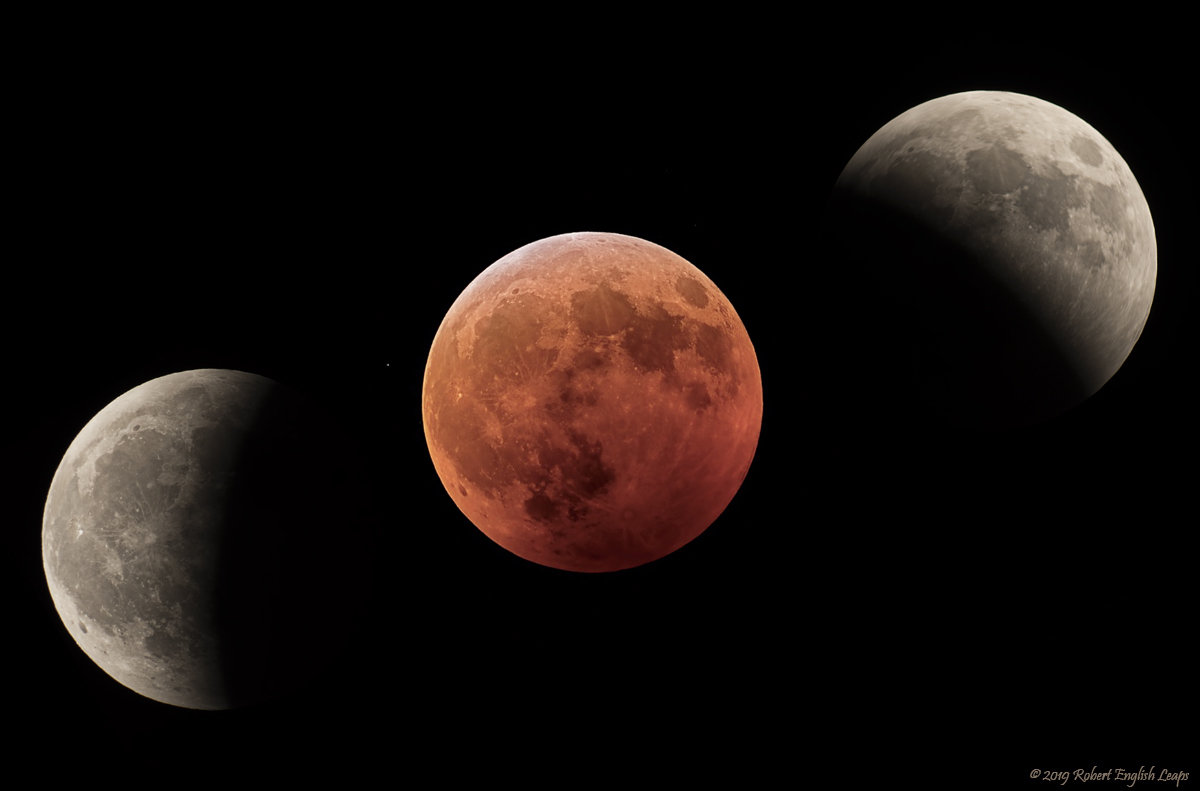
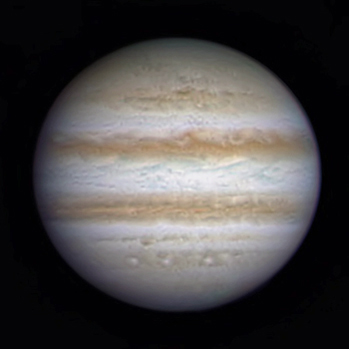
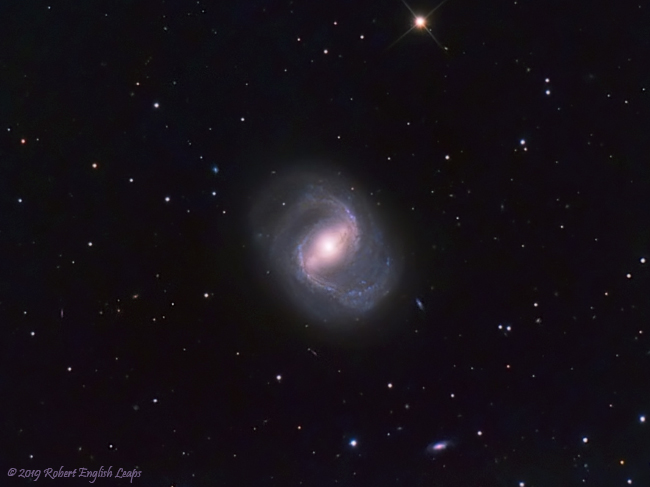
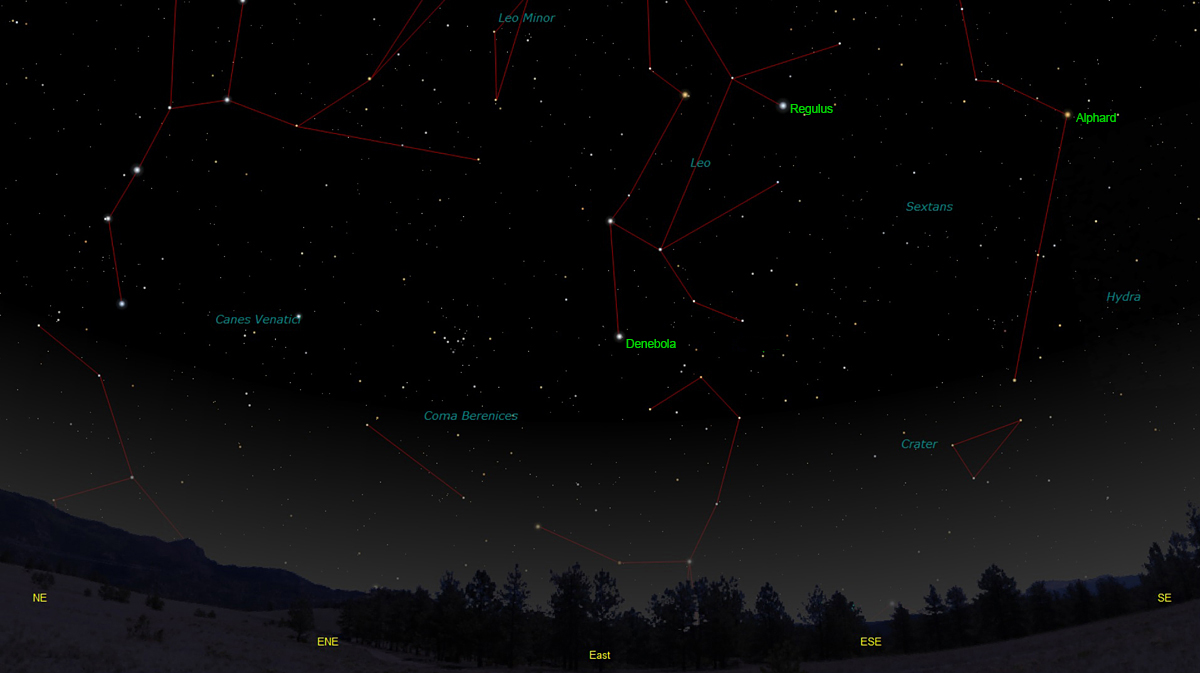
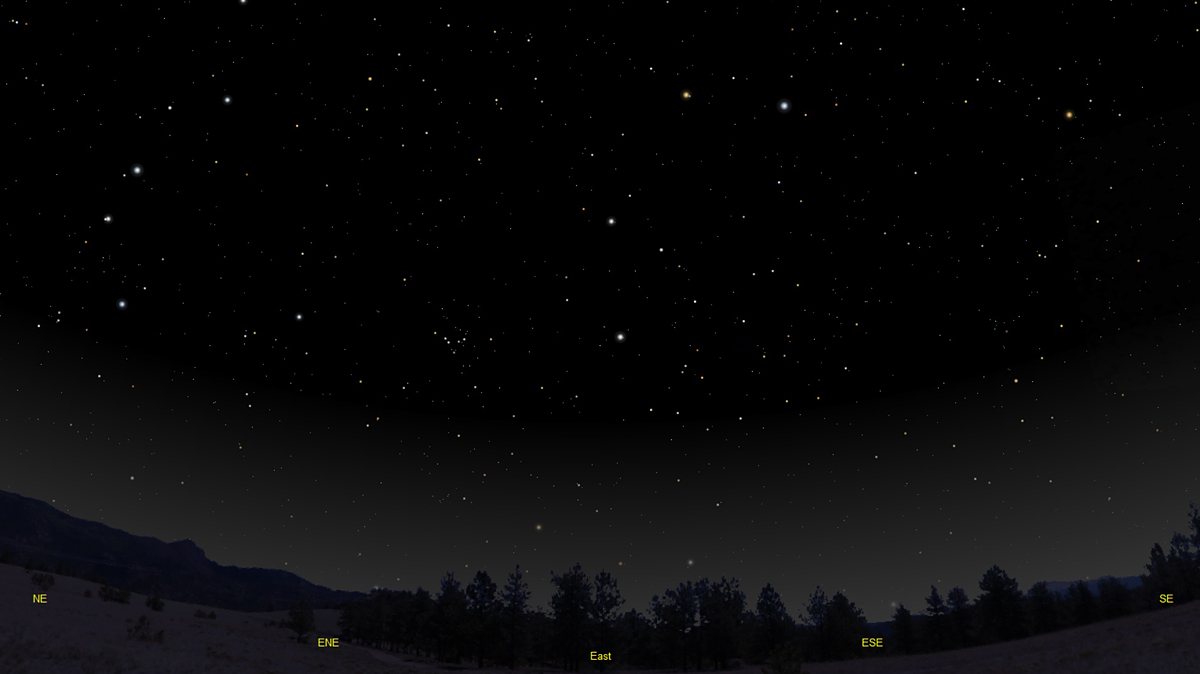
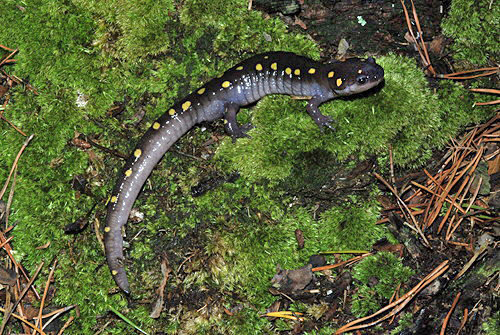
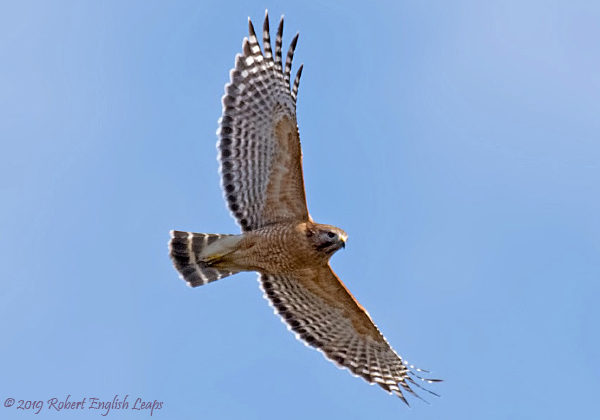 Many times when we have been out looking for amphibians in February we've
witnessed courtship flights of the
Many times when we have been out looking for amphibians in February we've
witnessed courtship flights of the 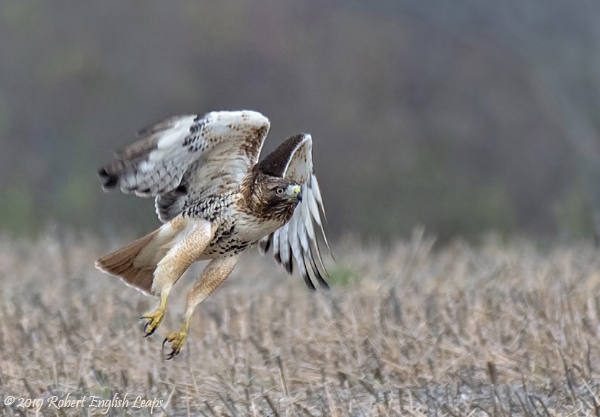 "[Red-tailed Hawks]...begin their nest building late in February or early
in March; I have seen a wholly new nest half completed and decorated with
green pine twigs and down as early as February 18th, over a month before
the eggs are laid...Typical nests are from 28 to 30 inches in outside
diameter, the inner cavity being 14 or 15 inches wide and 4 or 5 inches
deep...The nests are well made of sticks and twigs, half an inch or less
in thickness, and neatly lined with strips of inner bark, of cedar,
grapevine or chestnut, usnea, and usually at least a few green sprigs of
pine, cedar or hemlock. Some nests are profusely and beautifully lined
with fresh green sprigs of white pine, which are frequently renewed during
incubation and during the earlier stages of growth of the young...They
"stake out their claim" late in February or early in March...by marking
the nest they propose to use with a sprig of green pine...I believe that
the birds prefer to build a new nest each year, but they sometimes use the
same nest for consecutive years..."
"[Red-tailed Hawks]...begin their nest building late in February or early
in March; I have seen a wholly new nest half completed and decorated with
green pine twigs and down as early as February 18th, over a month before
the eggs are laid...Typical nests are from 28 to 30 inches in outside
diameter, the inner cavity being 14 or 15 inches wide and 4 or 5 inches
deep...The nests are well made of sticks and twigs, half an inch or less
in thickness, and neatly lined with strips of inner bark, of cedar,
grapevine or chestnut, usnea, and usually at least a few green sprigs of
pine, cedar or hemlock. Some nests are profusely and beautifully lined
with fresh green sprigs of white pine, which are frequently renewed during
incubation and during the earlier stages of growth of the young...They
"stake out their claim" late in February or early in March...by marking
the nest they propose to use with a sprig of green pine...I believe that
the birds prefer to build a new nest each year, but they sometimes use the
same nest for consecutive years..."